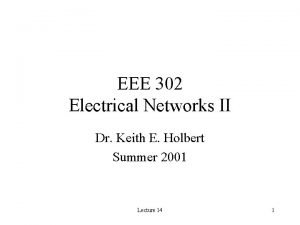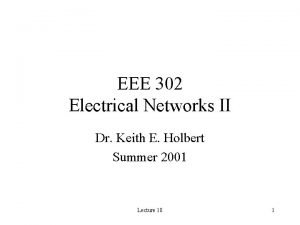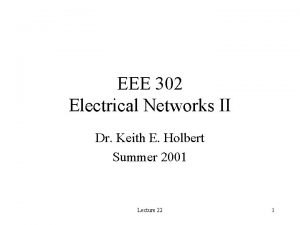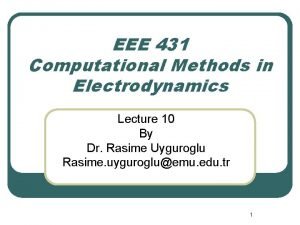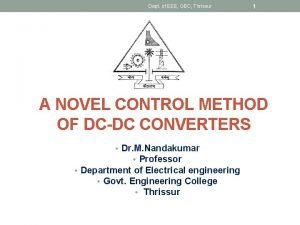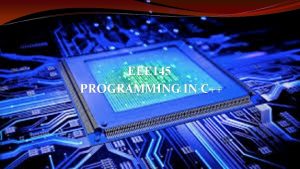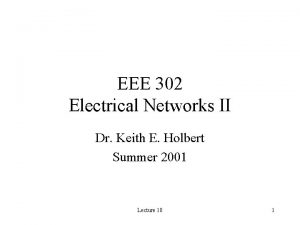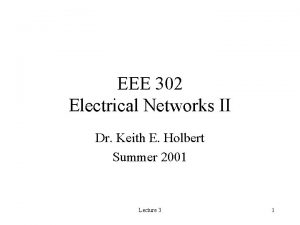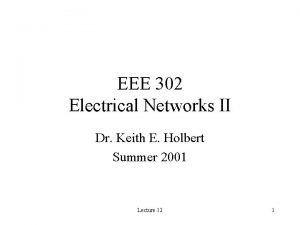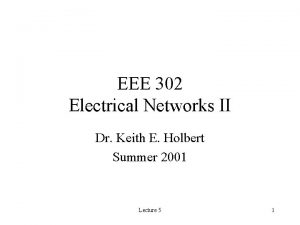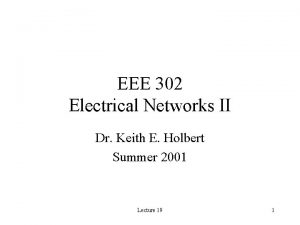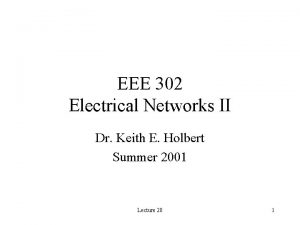EEE 302 Electrical Networks II Dr Keith E











- Slides: 11

EEE 302 Electrical Networks II Dr. Keith E. Holbert Summer 2001 Lecture 14 1

Solving Differential Equations • Laplace transform approach automatically includes initial conditions in the solution • Exercise: For zero initial conditions, solve Lecture 14 2

Inverse Laplace Transform • Consider that F(s) is a ratio of polynomial expressions • The roots of the denominator, D(s) are called the poles – Poles really determine the response and stability of the system • The roots of the numerator, N(s), are called the zeros Lecture 14 3

Inverse Laplace Transform • We will use partial fractions expansion with the method of residues to determine the inverse Laplace transform • Three possible cases (need proper rational, i. e. , n>m) (1) simple poles (real and unequal) (2) simple complex roots (conjugate pair) (3) repeated roots of same value Lecture 14 4

Simple Poles • Simple poles are placed in a partial fractions expansion • The constants, Ki, can be found from (use method of residues) • Finally, tabulated Laplace transform pairs are used to invert expression, but this is a nice form since the solution is Lecture 14 5

Class Examples • Extension Exercise E 13. 9 • Extension Exercise E 13. 10 Lecture 14 6

Complex Conjugate Poles • Complex poles result in a Laplace transform of the form • The K 1 can be found using the same method as for simple poles WARNING: the "positive" pole of the form - +j MUST be the one that is used • The corresponding time domain function is Lecture 14 7

Class Example • Extension Exercise E 13. 11 Lecture 14 8

Repeated Poles • When F(s) has a pole of multiplicity r, then F(s) is written as • Where the time domain function is then • That is we get the usual exponential multiplied by t's Lecture 14 9

Repeated Poles (cont’d. ) • The K 1 j terms are evaluated from • This actually simplifies nicely until you reach s³ terms, that is for a double root (s+p 1)² • Thus K 12 is found just like for simple roots • Note this reverse order of solving for the K values Lecture 14 10

Class Examples • Extension Exercise E 13. 12 • Extension Exercise E 13. 13 Lecture 14 11
